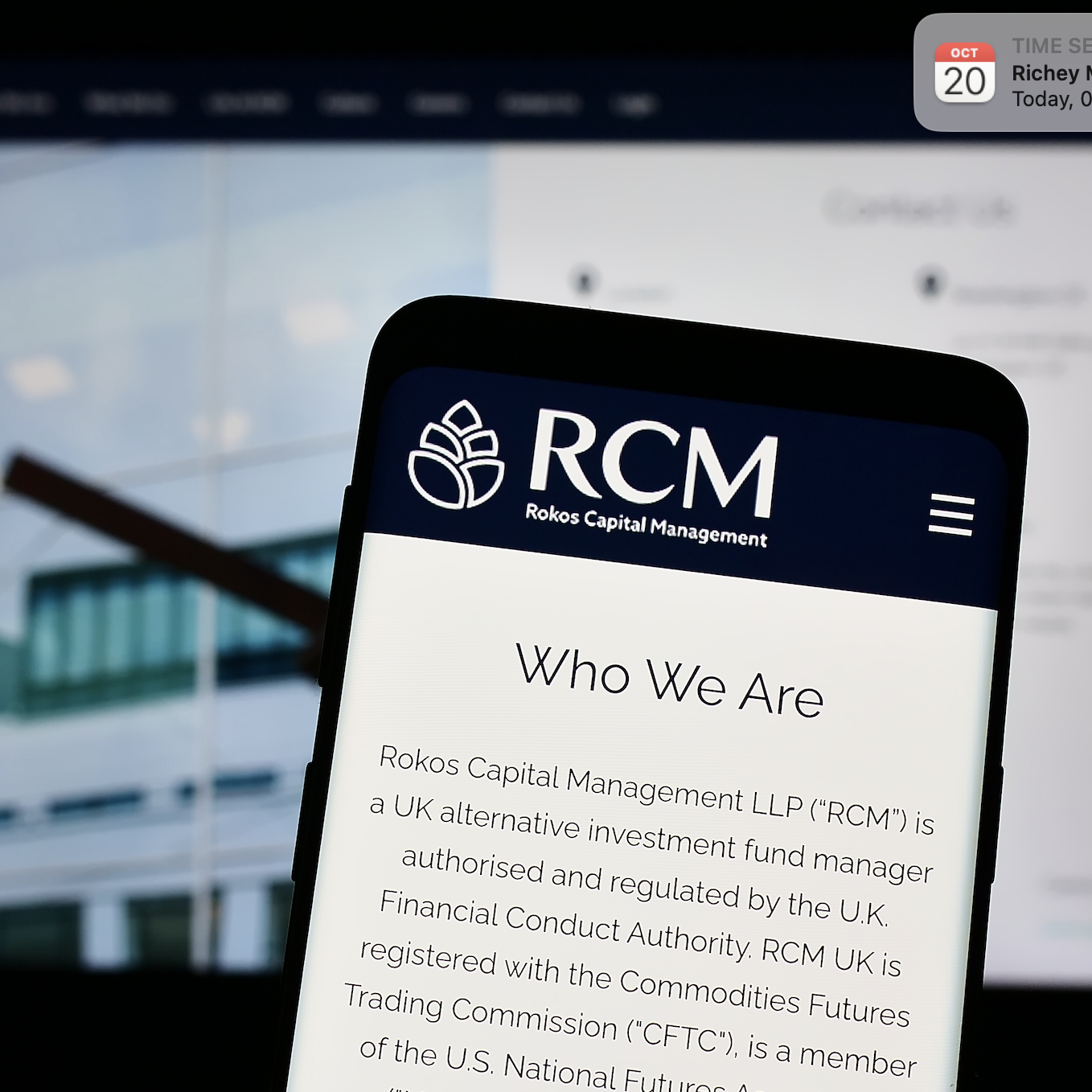For years hedge fund managers have been routinely describing their goal – indeed, their promise to investors – as achieving ‘above-average risk-adjusted returns’, and the industry has traditionally
For years hedge fund managers have been routinely describing their goal – indeed, their promise to investors – as achieving ‘above-average risk-adjusted returns’, and the industry has traditionally trumpeted its dedication to the highest standards in monitoring, measurement and management of risk. But 2008 was the year in which many of these proclaimed promises and standards were revealed to be empty or inadequate.
To a considerable extent the efforts of managers to master risk in the management of their portfolios has been found wanting to as the credit crunch has unfolded and the economic environment for the industry has deteriorated. Now a much more effective handling of risk issues by investors and managers, as well as by service providers, has been demonstrated to be imperative.
Nowhere were risk management procedures approaches proven to be more inadequate than in relation to investments with US fraudster Bernard Madoff, whose asset management business, which purported to run as much as USD65bn for investors, was unmasked almost overnight last December as a gigantic Ponzi scheme. A host of market participants failed to heed clues that might have alerted them to the fact that for years if not decades, Madoff completely failed to invest his clients’ money but simply paid returns out of new inflows.
End-investors, capital introducers, managers of feeder funds and service providers such as fund custodians, administrators and auditors all stand accused of failing to conduct proper due diligence on Madoff and his investment techniques, or skipping over warning signs that should have indicated a model that did not stand up to scrutiny – red flags that were easily found by other institutions that considered placing money with Madoff but decided against it.
‘Every time a Madoff-style case comes up it reinforces that people need to do background screening,’ says Doug Nairne, head of enhanced due diligence operations at World-Check, a London-headquartered provider of risk screening and research services. ‘If people had done even basic due diligence on Madoff, enough red flags would have come up to have given them second thoughts about whether they should be doing business with him.’
Not all the problems that have emerged with risk management strategies over the past 18 months have been so blatant, but a common theme for both hedge funds and their investors has been that the focus had become skewed toward the return end of the risk/reward balance. At the same time, risk management models failed fully to take into account the interdependence of financial processes and assets, as well as behavioural factors that led to correlation in the value of assets in ways that traditional economic models had not predicted.
The large-scale breakdown of risk management processes, however, has provided an opportunity for a root-and-branch rethink across the industry, from the extent and rigour of due diligence processes carried out by investors, service providers and fund of funds managers to the development of new risk modelling techniques and parameters drawing on the experience of the past months and years. For example, the exposure of hedge funds to counterparty risk with their prime brokers has abruptly become an issue that must be factored into the calculations of both fund promoters and their investors.
‘The Lehman Brothers and Bear Stearns collapses have highlighted the need for hedge funds to adequately diversify their prime brokerage and counterparty relationships, and to have contingency plans in case a major broker disappears,’ argue Moody’s analysts in a report on hedge fund risk issues published earlier this year.
‘It has also become clear that the prime broker or lending agreements themselves could have been structured in ways that would have substantially mitigated the disruptive effect of counterparty failure. For example, the segregation of margin collateral through third-party custody arrangements would have significantly reduced delays in the identification and repossession of assets pledged by the hedge fund. Similarly, limitations on the rehypothecation rights of prime brokers or secured lenders would also have greatly facilitated recovery of hedge funds’ collateral.’
The stakes are high, not only for investors who stand to lose their money and managers who can see their business unravel with dizzying speed, but also for service providers that may find themselves in the legal front line if investments go wrong, and for both managers and other industry providers that find themselves under much more intense regulatory scrutiny. For example, the sudden focus on the responsibility of custodians and administrators toward end-investors is already prompting a reappraisal of how these businesses take on new clients.
To a large extent, this review of the evaluation and handling of risk will be able to draw upon resources already becoming available, including sophisticated IT systems that can better identify the nature and extent of risks through improved models and a wider range of data, but also the use of specialist consultants and other firms that focus exclusively upon risk services for different types of client, especially the kind of due diligence examination that would raise the alarm over Ponzi schemes and other types of fraud.
‘The ongoing financial crisis has once again highlighted the importance of appropriate risk management in finance and the catastrophic failures of conventional approaches,’ says Professor Ingo Walter, director of SimCorp StrategyLab, a Copenhagen-based research institution founded and sponsored by investment management software provider SimCorp, in its latest global investment management risk survey published in March.
Walter cites the over-reliance of financial firms on fragile models designed by specialists lacking business knowledge and common sense, inadequate stress testing of the models being used, lack of empowerment of risk managers by comparison with revenue producers and poor communication and lack of understanding at board level.
‘Cumulative global losses to investors and financial intermediaries – partly borne by taxpayers as well – look to be in excess of USD3trn by the time the storm dissipates,’ he says, ‘So it cannot be ‘business as usual’ for risk management going forward. In many ways it will be ‘back to the drawing board’ – market discipline, the actions of supervisory boards and the inevitable response of the regulators will see to that.’
The survey, which encompassed 90 companies in the investment management sector including fund managers, pension schemes and insurance companies, found that awareness of and responsiveness to risk issues grew appreciably last year, with 73 per cent of respondents reporting that the risk function contributed to some or a large degree, to efficient use or allocation of capital and resources within the organisation, and 58 percent saying that the role and responsibility of the risk function increased during 2008.
The survey participants believed that risk management within their organisations would be boosted most by increased strategic influence for the risk function, improved risk management processes and operations and risk reporting. Operational risk and financial risk were the best covered and most monitored risks, while knowledge management was by far the least covered and monitored.
The respondents identified insufficient risk methods and techniques, insufficient strategic understanding of the role of the risk function, and insufficient training and competencies in the risk management function as significant causes of financial losses in the investment management industry. In general they expressed above-average satisfaction with their risk management software, but were least satisfied with their ability to process real-time data.
‘Timeliness of risk management data and risk reporting remains a critical issue that has surfaced once again in the current crisis,’ say Walter and his colleague Lars Falkenberg. ‘In cases where the source of large loss was made public along with the underlying causes, it seems clear that both data inadequacies and timeliness were important in management and control failures.
‘Almost half of the respondents in the survey recognise the critical importance that the ability to store, process and report high quality, real-time data on risk exposure will have on the reputation and franchise value of financial institutions in the future. Indeed, some 17 per cent of respondents assign responsibility for direct financial loss in the industry in the past two years to insufficient support on the part of IT platforms and applications and consequently poor data quality.
‘While about 20 per cent of the survey respondents mainly use internal systems and applications for management of market, credit, counterparty and operational risk, almost a third of the respondents indicated a lack of familiarity with the specific systems being used, and almost 40 per cent state that their internally-developed systems cannot process real-time data. Roughly 25 per cent of those whose systems cannot process real-time data across risk types nevertheless use best of breed, stand-alone risk management installations sourced externally.’
According to Moody’s, a significant portion of the losses suffered by hedge funds last year probably reflects deficiencies in operational management and control. ‘From an operational quality standpoint, the absolute level of a hedge fund’s market risk is not as important as whether that risk level is in line with the fund’s self-prescribed limits,’ the report says.
‘Losses that are disproportionately large in the context of the fund’s stated investment strategy may indicate inherent flaws in the firm’s approach to risk control that are not apparent until market stresses become unexpectedly severe. Alternatively, such losses may reflect an opportunistic departure from the investment strategy or portfolio guidelines described in the fund’s offering memorandums or other representations made to investors. In Moody’s view, both scenarios indicate operational deficiencies.’







